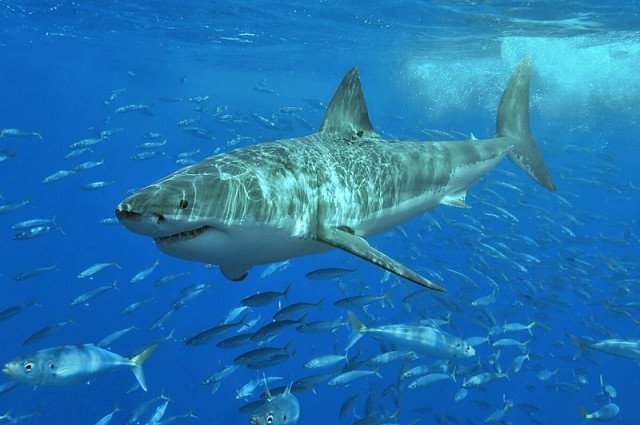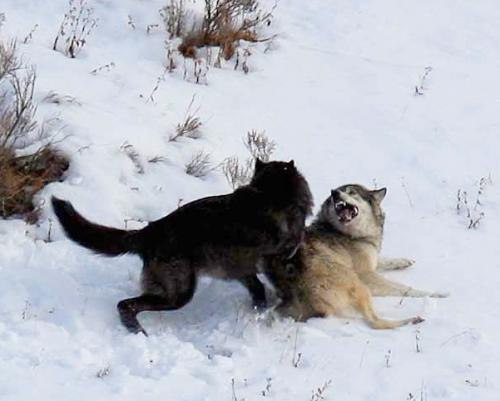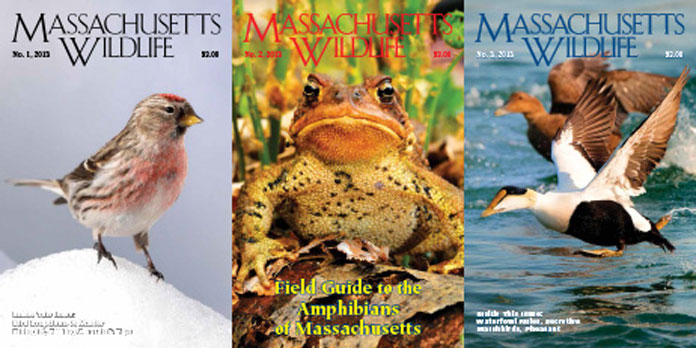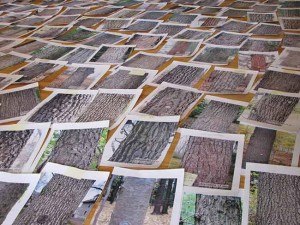Was a 9-Foot-Long Shark Eaten Off of Australia?

An 11yo incident off the coast of Australia has recently come to light, and it’s a fascinating one.
Four months after ‘shark alpha’ was tagged with a radio tracker, its unit washed up on shore only miles from where it had been tagged. After reviewing the data, researchers believe that the radio tag took an eight-day ride in the belly of a massive great white.
It is possible that in a fight with another shark the device was bitten off, but scientists are entertaining the possibility that the entire shark was consumed by a “colossal cannibal great white shark.”
For more information visit IFLScience.Com and The Smithsonian Chanel.
The Importance of Open Spaces for Wolves

Wolves occupy a unique place within the psyches of many Americans, often stirring up ambivalent feelings: they’re amazing and majestic creatures, but do they have an impact on local game animals, livestock, pets, and perceived levels of safety?
While I’d suggest you read and savor Aldo Leopold’s seminal essay Thinking Like a Mountain to add depth to your personal understanding of the role of wolves in ecosystems, this recent article presents new and unexpected information regarding the health of wolf populations in the west.
“Without adequate space to raise their offspring, wolf packs lash out at competing clans and fight to the death to protect their turf.
That’s among findings of a recent study by Utah State University ecologist Dan MacNulty and colleagues from the University of Oxford and the Yellowstone Wolf Project. The team published the research in the April 21, 2014, online issue of Journal of Animal Ecology. Their paper will appear in a future print edition of the British Ecological Society publication.”
For more, head over to Phys.Org.
Getting to Know Bark!

Photo by Sharon Peterson, Flickr
Last weekend, a group of AIAO’s core staff and community had the very good fortune to take part in a workshop presented by Bark author Michael Wojtech, which was simple and illuminating, and focused on some of Bark‘s basics.
Completed while obtaining his M.S. in Conservation Biology from Antioch University, Bark is an amazing and relatively simple guide for identifying trees with the information you have in front of you, rather than what may be 3o feet in the air, out of sight and out of reach. Put another way, Bark brings tree identification down to our level: naturalists, scientists, academics, nature enthusiasts, and others will find it the information in its pages invaluable.
You can visit his website, KnowYourTrees.com, and you can also check out this great article he wrote for Northern Woodlands magazine.
Suggested Reading: Massachusetts Wildlife Magazine

“Massachusetts Wildlife magazine is a quarterly publication packed with award-winning articles and photos on the environment, conservation, fishing, hunting, natural history and just about everything relating to the outdoors in Massachusetts.”
“Get all the inside information on wildlife and fisheries management, endangered species restoration programs, critical habitat protection and the outstanding people who are working to conserve our outdoor resources. If anyone in your family has an interest in the outdoors, this is the magazine they can’t do without!” – From the Fisheries and Wildlife Website
I’ve been thumbing through this magazine for decades (my family had a subscription all throughout my childhood, and I have one now), and it never disappoints. From the stunning photography which is often taken by Bay State residents to the insightful articles, you can’t go wrong with a subscription (my favorite recent edition is the guide to Massachusetts amphibians!).
It’s a steal for the price: one year will cost you $6, and two will cost $10. So, with the cost of conservation efforts steadily rising, and the the funds to cover them plateaued, a subscription Massachusetts Wildlife is literally a small price to pay for great information and supporting a great cause.
Check out their website today!
Discovered: Longest Mammal Migration in the Lower 48
“When wildlife biologist Hall Sawyer strapped radio collars to dozens of mule deer wandering southwestern Wyoming’s Red Desert in January 2011, he thought the humble animals were as rooted as the landscape’s windblown sage, low hills and staked fence posts.
Then the deer vanished out of radio range.
He chartered a plane to search all of western Wyoming. When the pilot found them, Sawyer was amazed. In just a few months, hundreds of Red Desert deer had walked more than 150 miles north into the craggy mountains south of Yellowstone National Park. Their trek, a 300-mile round trip, marks the longest known migration of any mammal in the contiguous United States.” – From Revealed: Biologists discover longest mammal migration in Lower 48 by Nate Schweber
For more information, see the article at article at Al Jazeera America and the Wyoming Migration Initiative.
How Wolves Change Rivers
This video has been making the rounds recently, and for good reason. Reminiscent of Aldo Leopold’s Thinking Like a Mountain, it presents a convincing argument for the presence of large predators in ecosystems.
It’s beautiful, and I can almost guarantee that it will expand the way you view landscape.
 Adventure In Adventure Out
Adventure In Adventure Out
